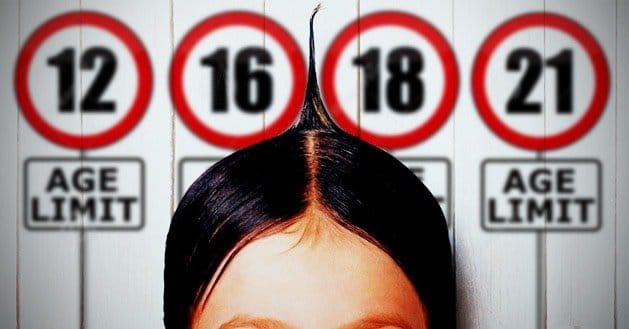 Written by ContentPowered.com
Written by ContentPowered.com
Do you manage a brand that targets an adult audience on Facebook? Did you know that you can set age restrictions on your Facebook business page? By default, fan pages are configured to allow any Facebook user to view the content. However, you can specify the age of the audience who can see your Facebook business page, also known as your fan page. If you promote an alcohol-related brand or establishment, you can also configure your fan page as “Alcohol-Related.” The alcohol-related page will only display to adults. You can place age restrictions on your page regardless of your content.
How to Set Age Restrictions
To set age restrictions on your fan page, log into Facebook, and then open your fan page. Click the “Edit Page” button, and then click “Edit Settings.” The Settings screen opens, and the General tab is active. The screen displays the page configurations you can modify for your fan page. Click the entry labeled “Age Restrictions” to set age restrictions on the page.
To restrict users by age group, click the drop-down box and select the desired group. Choices are “Anyone (13+),” “People 17 and Over,” “People 18 and Over,” “People 19 and Over,” “People 21 and Over” and “Alcohol-Related.” Click the “Save Changes” button to save the settings. When you click the Save Changes button, a warning message appears. Click “Yes” to confirm the setting.
What Happens When You Set Age Restrictions
When you set age restrictions, only people above the minimum age will be able to view your fan page. Additionally, any comments and likes that are already saved on the page from people under the minimum age are immediately deleted. However, if you remove the age restrictions from the page at a later date, the deleted comments and likes are not replaced.
Additional Page Privacy Options
You can configure a variety of privacy settings on your Facebook fan page from the Settings screen. For example, you can enable Post Targeting and Privacy so that you can control who sees your News Feed and individual posts.
Posting Ability
The Posting Ability setting is configured to allow anyone who can view your fan page to post and add media to your page’s timeline. Deselect these options to disallow users from posting content to the timeline, and then save your changes.
Post Visibility and Page Moderation
Select the Post Visibility option to hide or show other users’ posts on your timeline by default. If you want to filter posts that contain certain words in the comments, select the Page Moderation option, and then type the words to filter. Many page administrators block known offensive words if they allow users to post and posts are immediately visible. The Page Moderation feature provides a way to proactively moderate offensive content, even if you don’t have time to moderate each post.
Profanity Filter
Fortunately, page administrators do not need to enter every known curse word or profanity into the Page Moderation filter because the Facebook platform automatically provides a Profanity Filter. Click the “Profanity Filter” option in the Settings page, and then click the drop-down box. Select “Strong” or “Medium,” depending on the strength of the filter you want to use. Click “Save Changes” to save the settings.
Replies
You can enable the Replies feature to allow users to reply to comments. Click the “Replies” entry, and then check the check box to enable the feature.
Post Targeting in News Feeds
Once you enable Post Targeting in the Settings screen, you can target your individual posts when you publish them on the fan page. Create the post, and then click the Target icon, add then click “Add Targeting” to open the Targeting options. If you do not see the Target icon, return to the Settings page and enable Post Targeting, then re-save the settings.
You can target your posts to several specific groups. For example, you can target by:
- Gender
- Age
- Location
- Language
- Interested In
- Educational Status
- Relationship Status
To target an exclusively male or female audience, click the “Target by Gender” option, and then click the gender to target. You can add as many filters as you like, but remember that with each filter, your audience is further thinned.
You can also target by age with post targeting. Just click the Target icon in the post, and then click the “Add Targeting” option. Select “Target by Age,” and then specify the age group to target. Publish the post when you have selected all target groups.
Note that targeting your posts to a certain age group is different from placing an age restriction on your page. When you place an age restriction on the page, users under the specified age cannot see the page. When you target a post to a particular age group, other users who are not in the specified group can see the post. Targeting does not restrict the post from view for the non-targeted users. Targeted posts will, however, appear at the top of the News Feeds of targeted users.
Fan Page Default Settings
Anyone on the Internet with or without a Facebook account can view your fan page. However, in order to like or comment on your page, the user must log into the Facebook platform. This means that you can share your fan page with individuals who do not use Facebook, but they will need to create an account on the platform to use the social features.
Inviting Users to Your Fan Page
Your fan page will come up in Google searches and you can invite contacts from any of your contact lists to follow and like your page. To invite your contacts, click the “Build Audience” option at the top of the page, and then click “Invite Email Contacts.” Facebook integrates with most free cloud-based email services, so all you need to do is provide your email address and password. You can invite up to 7,000 contacts per day.
Note that, by default, Facebook is configured to use your email contact list for advertising and connecting other users. You can manage your own contact settings to prevent automatic sharing of information from the Manage Invites and Imported Contacts page https://www.facebook.com/invite_history.php.
The invitations you have sent and your imported contacts are indexed on this page. After you have invited all of the selected contacts from your contacts list, click “Remove All Contacts” to remove your imported list. Your invitations are recorded on the page in the Sent Invitations section.
In Summary…
Restriction vs. Targeting
Restricting the page prevents specific groups from viewing the page. Targeting your posts, on the other hand, only makes the posts appear at the top of users’ News Feeds. Targeting does not prevent users from seeing the post. If your fan page includes potentially sensitive or adult content, restrict by age to limit those under the specified age from viewing your content. However, if your brand is alcohol-related, choose the “Alcohol-Related” option instead of the Over 21 age option.
Age Restrictions vs. Alcohol-Related
Alcohol is prohibited in certain countries. If your page publishes alcohol-related content, simply setting the age restriction will not prevent your page from being viewed by users in countries where alcohol is not socially acceptable or legal. Setting the Age Restriction variable to “Alcohol-Related” enables users in such countries to filter out content they may find offensive.



thank you for this
How I make my profile age verified I have a following for my photos I’d like to have an age Verified